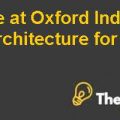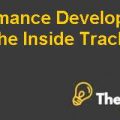Why do both offers have significant non-cash components?
These offers do not provide any cash at the start of the proposal. Each of the proposals provides a cash payment at the end of the first year and at the end of the term of the contractual arrangement.
Offer #1:
Offer one consists of two cash payment transactions; one is the cash payment of $38.1 million at the end of the term and $2.7 million annually ($5.4 million for two years). The second payment is based upon the performance on the company after sale transaction. The amount can be reduced on the basis of decreased performance. The first payment is at the end of 2 years and not any payment at the start of the term or acquisition.
Offer #2:
The second offer has three payment proposals; first one is the payment of $28 million at the end of the term, $9 million notes payable annually and 5% stakes in combined equity. The first payment is to be made at the end of the term, i.e. 4 years and second bond payment are at the end of the first year for the next 3 more years. The third payment is of 5% from which 2.5% stocks, the value equals at the date of combination.
In this proposal, the first payment will flow at the end of the first year of the combination and second is at the end of the fourth year. The last transaction is shares, but not the cash, therefore no cash inflow was expected at the time of combination of the two companies.
How would you value the two offers which Triple point has received?
These both proposals are valued at the term of free cash flow in which the present value of future cash flows can be considered as in this case the estimations are required to calculate free cash flow to the owners.
Offer #1:
Under option one arrangement of the option the current owners can retain 28% of stake in the company and with the management option they can have a stake of 20% more in Triple Point. The total is comprised of 46% holding in the company, but the decision making is in the hands of funds provider.
Through cash inflow technique the present value of total benefits is equal to $67.93 million (appendix 1). This comprises all share value and cash values that it will receive under this offer arrangement.Triple Point Technology Case Solution
Offer #2:
Under offer two, the current owners will get some cash at the end of term and some annual interval payments of bonds along with some stake in the combined equity. The current owners will get 5% of stake in the proposed terms and 2.5% through management involvement term.
The net present value from offer 2 is $42.95 million with assumptions of current and combined equity prices.
Acceptance:
The current owners will choose the first offer as this can give higher returns in cash and they will also hold a substantial stake in their company and it gives a net benefit of $24.98 million (appendix 3).
What do you have to believe about the future for one offer to be superior to the others?
The first offer is appropriate for the future outcome because the current owners have substantial knowledge and expertise to run the business and they get a 46% of stake in the current company. Through this arrangement, they can have some cash within 2 year time period and stake as well. They will get an amount of around $35 million for the stake of 54%.
The other offer merges the company and the management control to run the business will go into the hands of the new company. The cash arrangement does not seem to be acceptable and the period of term is 4 years, therefore it is not acceptable to the current owners of the company.
Which offer, if any, should Peter Armstrong accept?
Peter Armstrong is willing to continue the business and therefore, he must accept the first proposal and it is better for him and Paul to purchase the stake from Roger from the cash inflow that they will get from offer 1. Armstrong has its incentive to have stocks with them in the TPT and he is willing to run the business with some innovative ideas...............
This is just a sample partial case solution. Please place the order on the website to order your own originally done case solution.













